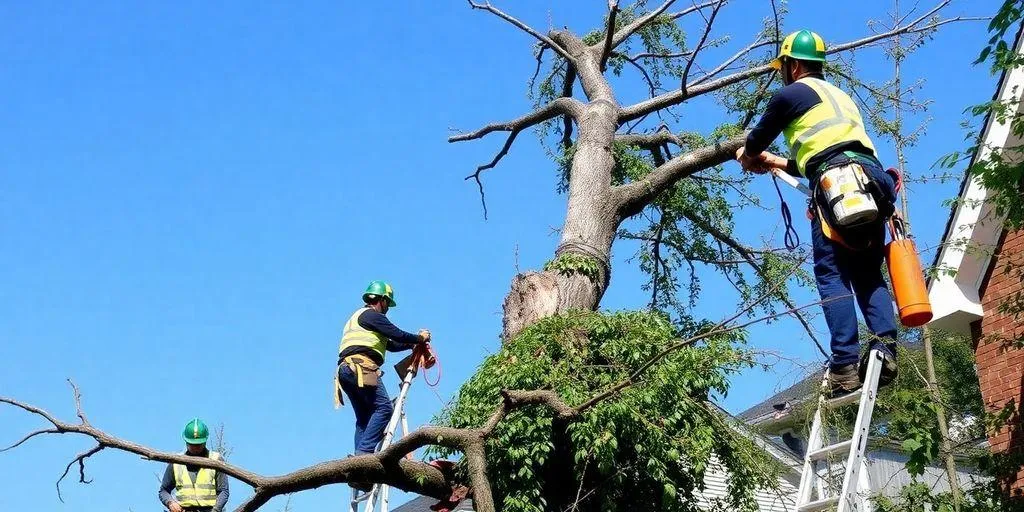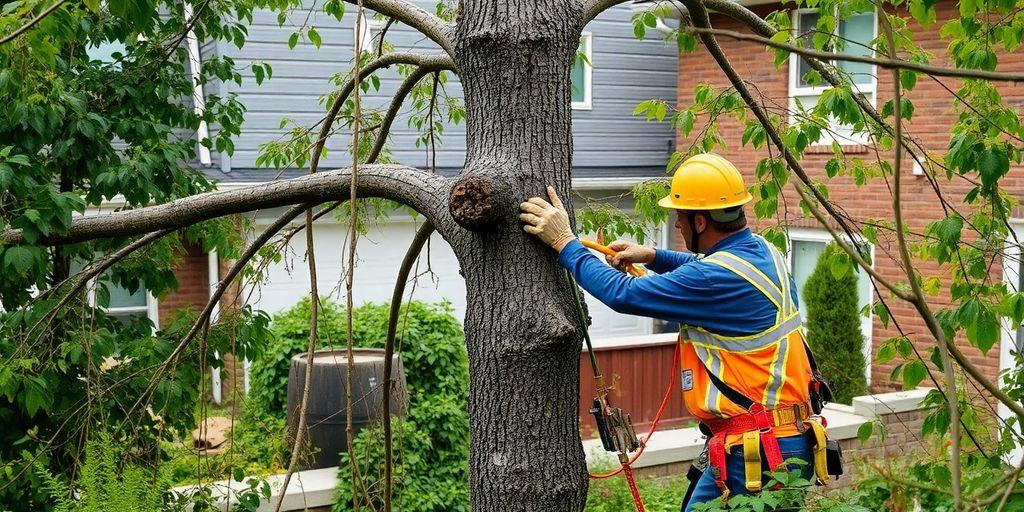Tree Service Montreal
Expert Dead Tree Removal Services in Montreal: Ensure Safety and Aesthetics for Your Property
Ensure safety & aesthetics with expert Dead Tree Removal in Montreal. Enhance property value & environment.
Living in Montreal, you might've noticed dead trees in your neighborhood or even your backyard. They can be more than just an eyesore; they pose real risks to your property and safety. Whether it's the threat of falling branches or the impact on your home's value, dealing with dead trees is something you shouldn't ignore. This article dives into why dead tree removal is crucial and how to find the right service in Montreal to get the job done safely and efficiently.
Key Takeaways
. Dead trees are not just unattractive; they are a safety hazard and can lower property value.
. Hiring a professional service is crucial to ensure safe and efficient removal of dead trees.
. Post-removal, consider landscaping options to enhance your property's look and feel.
Understanding the Importance of Dead Tree Removal in Montreal

Why Dead Trees Are a Hazard
We've all seen them—those lifeless, bare trees that stand like ghosts in our yards. While they might seem harmless, dead trees are actually quite dangerous. Their branches can fall without warning, especially during storms or high winds, posing a threat to people, pets, and property. These trees can also attract pests, like termites and beetles, which can spread to healthy trees or even your home.
Impact on Property Value and Aesthetics
Dead trees aren't just a safety concern; they can be an eyesore too. A yard full of dead wood can make your property look neglected, which isn't great if you're thinking about selling. Potential buyers might see dead trees as a sign of poor maintenance and worry about the cost of removal. Keeping your yard tidy and well-maintained with healthy trees can boost your property's curb appeal and value.
Environmental Considerations of Dead Tree Removal
We love our trees for the shade and beauty they provide, but when they die, it's important to remove them responsibly. Dead trees can disrupt local ecosystems and affect the growth of surrounding plants by hogging sunlight and nutrients. Removing them allows for new growth and can improve the overall health of your garden. Plus, when done properly, the wood can be recycled or used as mulch, providing an eco-friendly solution to the problem.
Taking care of dead trees isn't just about keeping up appearances—it's about safety and nurturing the environment around us. By removing these hazards, we make room for new life and ensure our properties are both beautiful and secure.
Choosing the Right Dead Tree Removal Service in Montreal

Key Factors to Consider When Hiring
When we're on the hunt for a dead tree removal service in Montreal, it's not just about who can cut down a tree the fastest. We need to think about safety, reputation, and experience. First off, check if the company has proper certifications and insurance. This protects us if anything goes wrong. Next, look into their track record—reviews and testimonials can give us a good idea of their reliability. Lastly, consider their equipment and techniques. Are they using modern tools and methods? This can make a big difference in how efficiently and safely they can get the job done.
Questions to Ask Your Tree Removal Service
Before we sign on the dotted line, there are a few questions we should definitely ask. Do they offer a free evaluation of the tree and the site? It's always better to know the situation before committing. What about their safety protocols? Knowing how they plan to protect our property and themselves is crucial. And what happens after the tree is down? Do they handle stump grinding and debris removal? It's these details that can make the process smooth or a total headache.
Understanding the Costs Involved
Tree removal isn't cheap, but understanding where the costs come from can help us budget better. Typically, the price depends on the tree's size, location, and the complexity of the removal. Some companies might charge extra for stump grinding or debris removal, so it's good to clarify these costs upfront. We should also ask about payment plans or financing options if the price is steep. Being clear on costs helps avoid any surprises when the bill comes.
Safety and Professionalism in Dead Tree Removal

Safety Protocols and Equipment Used
When it comes to removing dead trees, safety is our top priority. We don't just throw on a hard hat and call it a day. Our team uses the latest safety gear and equipment to ensure everything goes smoothly. This includes harnesses, helmets, and specialized cutting tools. We also follow strict safety protocols to protect you, your property, and our crew. We believe that a job well done is a job done safely.
. Use of personal protective equipment (PPE) like gloves, goggles, and helmets.
. Regular equipment maintenance checks.
. Detailed safety briefings before each job.
Insurance and Liability Considerations
Let's face it, tree removal can be risky. That's why we make sure we're fully insured. Our liability coverage means you don't have to worry about accidents or damage during the removal process. It's all about giving you peace of mind while we handle the heavy lifting.
. Comprehensive liability insurance.
. Workers' compensation for our team.
. Clear communication about potential risks and how they're managed.
Training and Expertise of Arborists
Our arborists are not just folks with chainsaws—they're trained professionals. We invest in their ongoing education so they can handle any tree situation with skill and precision. Whether it's a towering oak or a stubborn stump, they've got the know-how to get it done right.
. Certified arborists with specialized training.
. Regular workshops and skill refreshers.
. Experience with a variety of tree species and conditions.
Ensuring safety and professionalism in tree removal isn't just about ticking boxes; it's about doing the job right, every single time. We take pride in our work and in keeping your property safe and beautiful.
Enhancing Your Property Post-Tree Removal
Landscaping Ideas After Tree Removal
Once that old tree is gone, it's time to think about what to do with the space.
Transforming that empty spot can breathe new life into your yard. Here are a few ideas:
. Flower Beds: Plant colorful flowers to add a pop of color.
. Vegetable Gardens: Grow your own veggies and enjoy fresh produce.
. New Trees: Consider planting a young tree that suits your landscape.
Stump Grinding and Removal Options
After the tree's gone, the stump often remains. We can either grind it down or remove it completely. Here's what each option entails:
. Stump Grinding: Quick and less invasive, grinding leaves the roots in place.
. Stump Removal: More thorough, but it can disturb the surrounding soil.
Eco-Friendly Disposal of Tree Debris
We believe in taking care of the environment. After removing a tree, we handle the debris in an eco-friendly way. This might include:
. Mulching: Turn branches into mulch for your garden.
. Composting: Use small wood pieces to enrich soil.
. Recycling: Ensure wood is repurposed or recycled properly.
Removing a tree is just the beginning. With a little creativity and effort, you can turn that space into something beautiful and useful.
